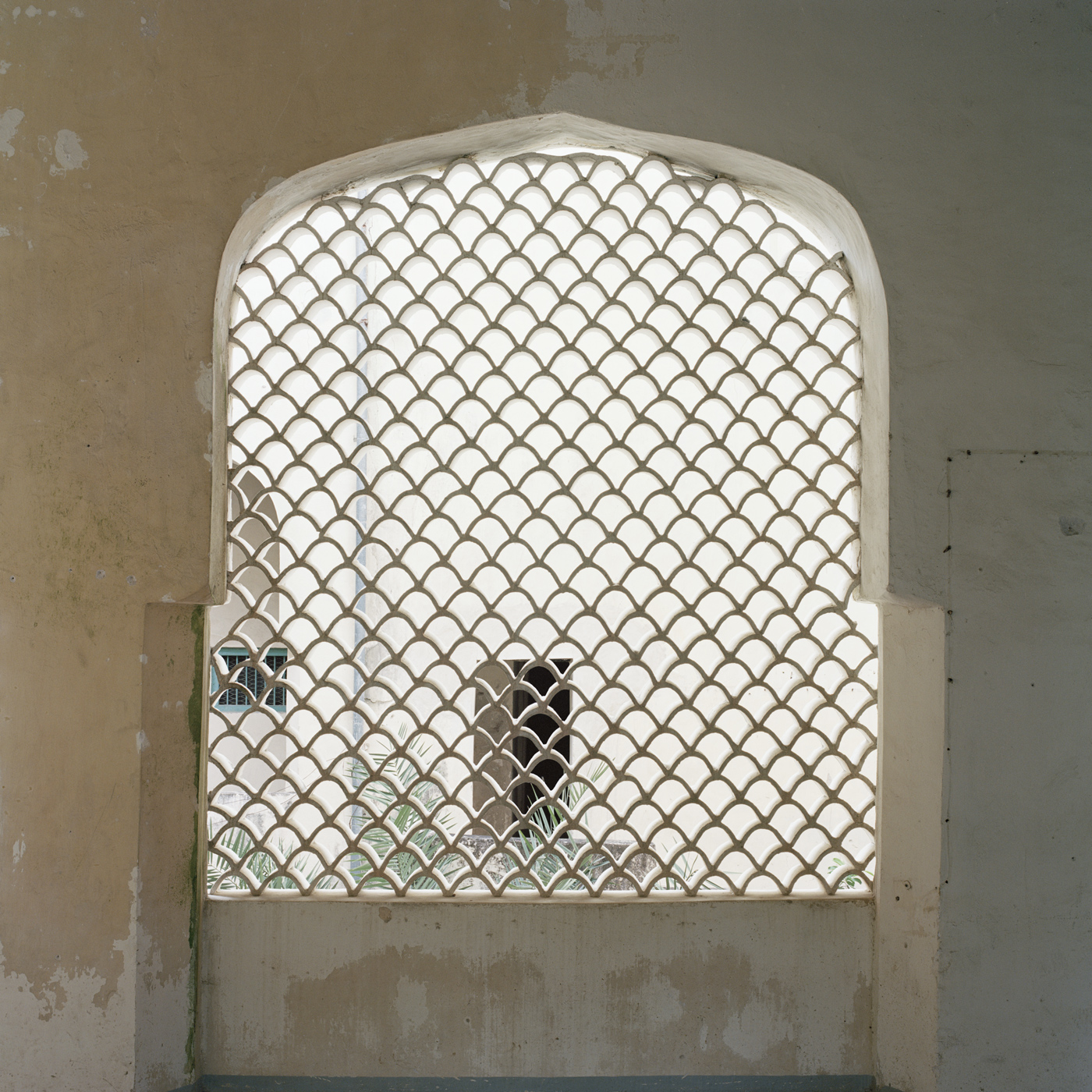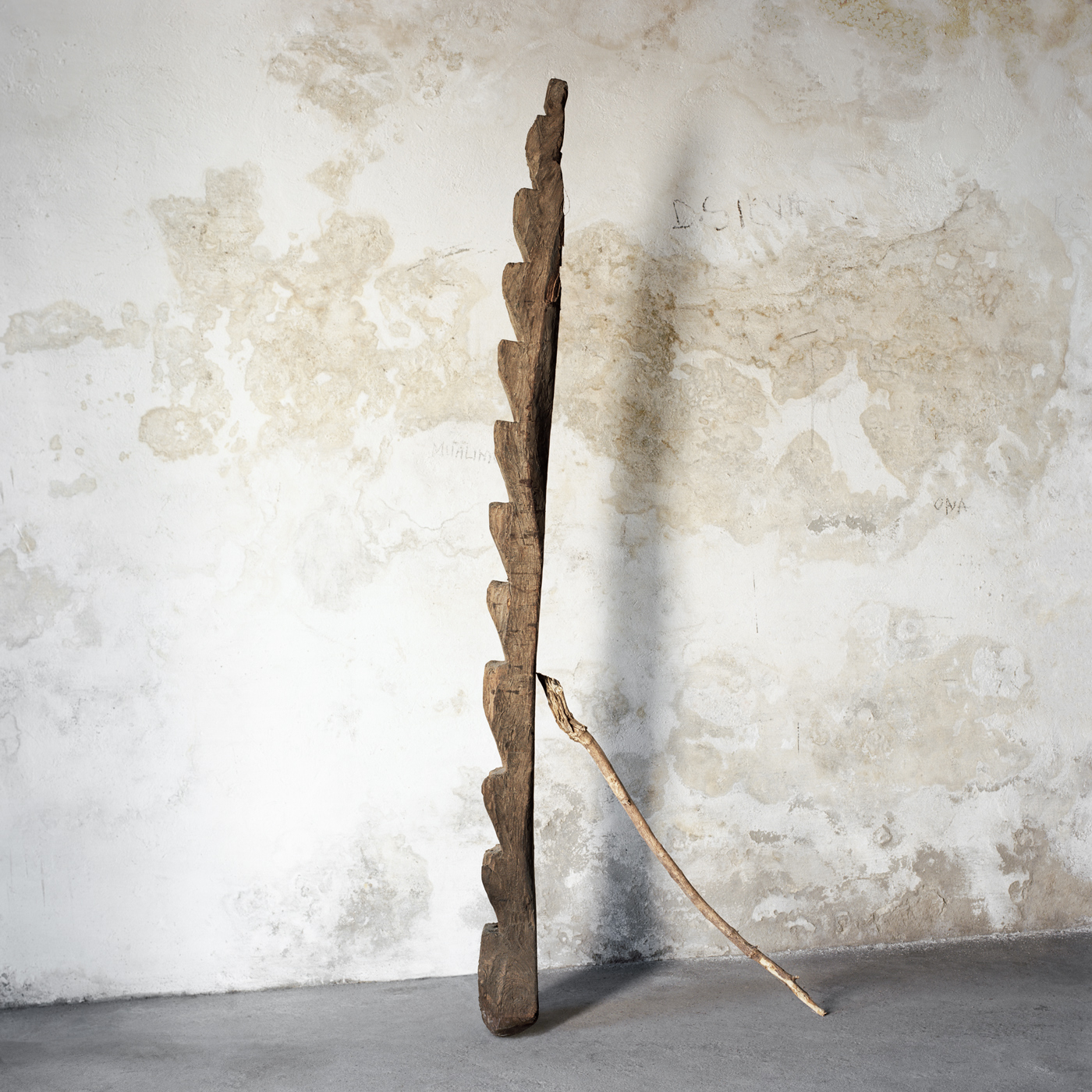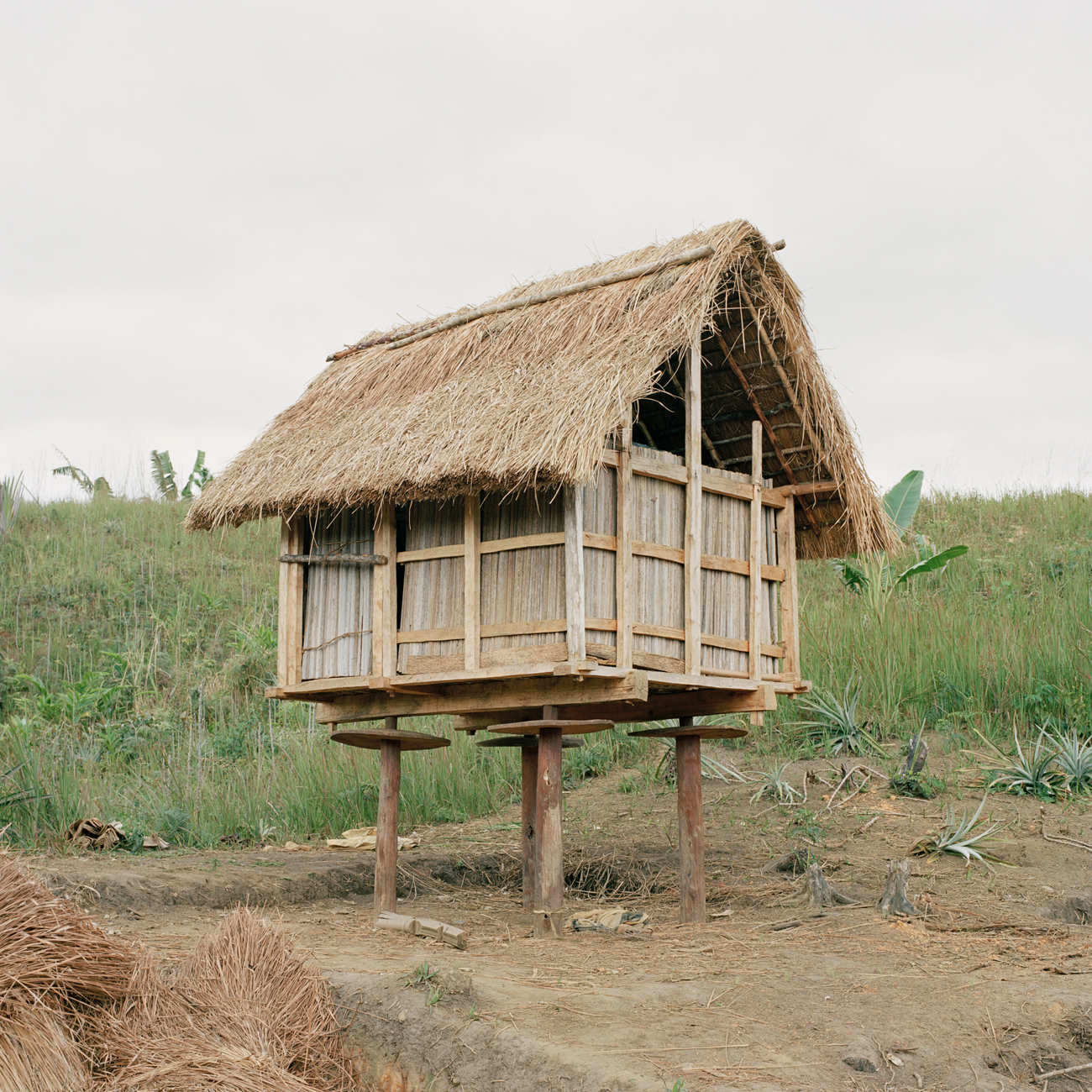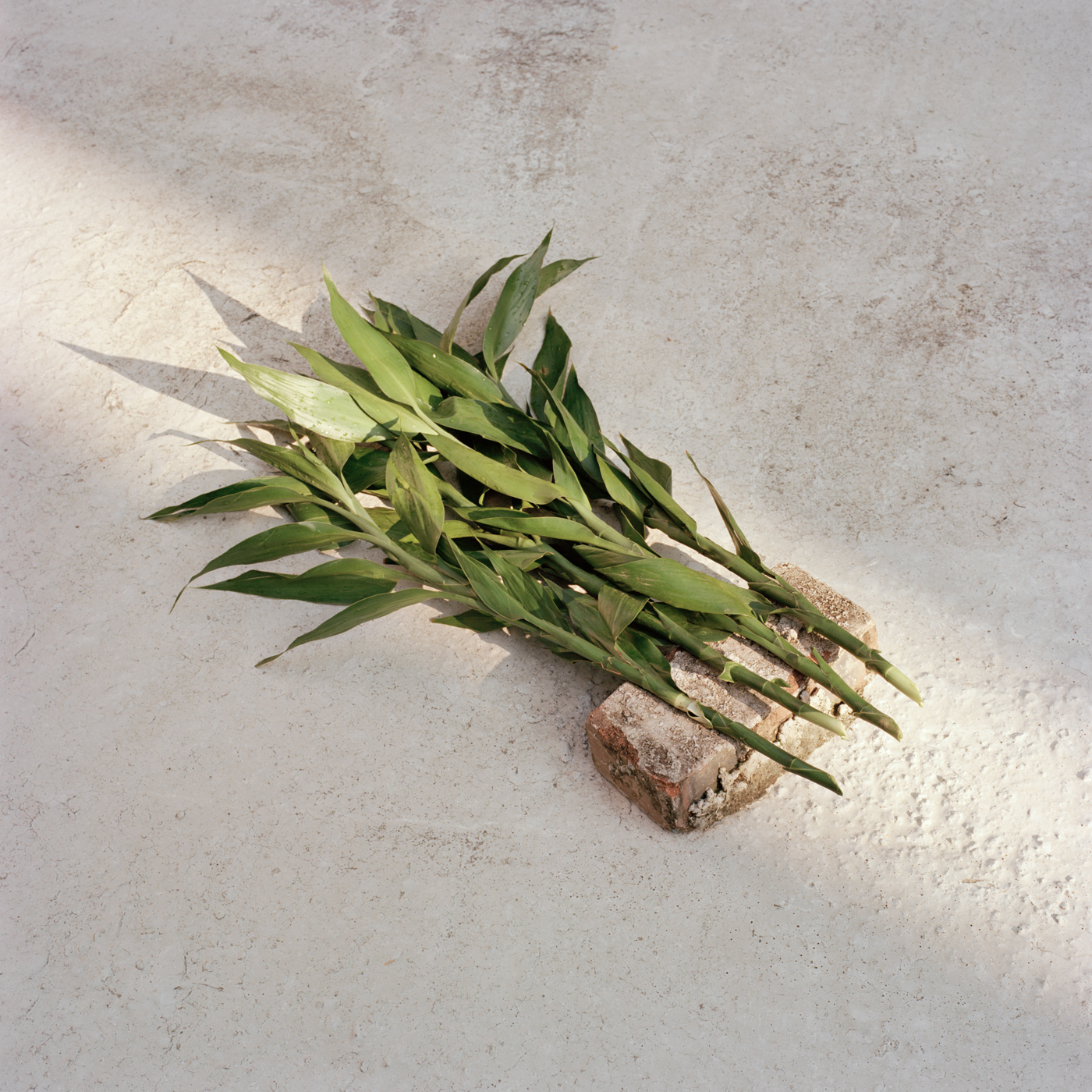SWAHILI MORPHOLOGY
A fascination with the Swahili townscape—its openness, porosity, and continual state of becoming—forms the starting point for Swahili Morphology. Before arriving in the Lamu Archipelago for an artist residency in 2019, I photographed the ruins of pre-colonial civilisations in Tanzania and Kenya; the port cities and stone towns of Mombasa, Zanzibar, and Lamu; modernist complexes in Dar es Salaam; and the many places in between where coral stone and lime constructions reflect the enduring influence of Swahili architecture. The resulting series weaves together a coastal tapestry of permeable buildings, artefacts, and other expressions of material culture, alongside my own sculptural experiments and still lifes. Across the East African littoral, porosity can describe both a physical quality—the ability of buildings to breathe—and a cultural one, through which Islamic, Indo-Chinese, African, and European elements have been absorbed and assimilated. In keeping with the incomplete and ever-changing nature of these environments, I continue to revisit and rephotograph certain sites, allowing the work itself to evolve through processes of accumulation and bricolage.
(2017-2022)
A fascination with the Swahili townscape—its openness, porosity, and continual state of becoming—forms the starting point for Swahili Morphology. Before arriving in the Lamu Archipelago for an artist residency in 2019, I photographed the ruins of pre-colonial civilisations in Tanzania and Kenya; the port cities and stone towns of Mombasa, Zanzibar, and Lamu; modernist complexes in Dar es Salaam; and the many places in between where coral stone and lime constructions reflect the enduring influence of Swahili architecture. The resulting series weaves together a coastal tapestry of permeable buildings, artefacts, and other expressions of material culture, alongside my own sculptural experiments and still lifes. Across the East African littoral, porosity can describe both a physical quality—the ability of buildings to breathe—and a cultural one, through which Islamic, Indo-Chinese, African, and European elements have been absorbed and assimilated. In keeping with the incomplete and ever-changing nature of these environments, I continue to revisit and rephotograph certain sites, allowing the work itself to evolve through processes of accumulation and bricolage.
ORGANISED ISLAND
(2012-2014)
Created on the former slave-trading islands of northern Mozambique, Organised Island looks at the relationship between colonial infrastructure and vernacular building traditions—between notions of dependence and subservience, oppressor and oppressed. Found objects, either photographed in situ or reorganised into playful interventions, form a series of improvised support structures. Assembled from humble materials like wood and stone, these precarious arrangements hint at the historical conditions in which the pillars of European civilisation were only made possible when supported by, propped up by, and at the expense of more vulnerable cultural groups. Beyond this context, the series opens out toward more personal readings—reflections on interdependence and power dynamics that shape human relationships. After all, we too require support, and are required to support others. The titles—Prop, Brace, Weave, Coil, Mirror, Split—borrow from the physical world to describe both objects and actions, subtly imbuing the inanimate with agency and emotion.
DWELLING IN MADAGASCAR
(2009 / 2013)
Malagasy culture—a confluence of East African, Southeast Asian, and Oceanian heritage—exists within a landscape as fragile as it is unique, where acts of dwelling unfold amid extraction and loss. Dwelling in Madagascar reflects on forms of homebuilding, both physical and emotional, in a place whose resources and people are deeply enmeshed in global systems of excess and exploitation. I began the project in 2009, during a military coup, later returning in 2013 as part of the nomadic research collective Unknown Fields. Following the trails of sapphire and ilmenite, of timber and gold, through markets, mines, and villages, the series traces black market and industrial supply chains that connect this precarious wilderness to our everyday lives. At these edges of production, where the ground is stripped and livelihoods are improvised, natural resources exist at their lowest point of value. Using the photographic language of domestic interiors and still lifes, the series reimagines sites of labour as delicate architectures of survival: intimate, inhabited environments, where the notion of dwelling extends into a sombre meditation on fragility and resilience.
THIN LINE LIVING
Taking its title from the Chinese saying “Yixiantian,” meaning “one-line sky,” or “thin-line sky,” this series explores the ecologies of urban and peri-urban spaces. The phrase refers to the sliver of daylight above narrow alleys in Chinese urban villages. Extending this thin-line analogy, Thin Line Living refers to the informal adaptation of interstitial spaces across Hong Kong, Shanghai, and Taiwan, where idiosyncratic arrangements of everyday objects form a kind of vernacular network. Here, plant life becomes an expressive metaphor for survival in high-density conditions, and domestic storage solutions reveal creative sensibilities through resourceful appropriations. A thin line also serves as a figurative expression, denoting a boundary that becomes almost unreadable. In places like Hong Kong, where living space is scarce, the blurring of public and private becomes one such threshold. Tucked behind doorways and inconspicuous corners, placed on ledges, or hung from pipes, personal items spill into any available space, transforming architecture into a framework through which individuality manifests. Although often overlooked, these utilitarian spaces speak to a collective visual language that animates the organic cityscape.
(2008-2016)
Taking its title from the Chinese saying “Yixiantian,” meaning “one-line sky,” or “thin-line sky,” this series explores the ecologies of urban and peri-urban spaces. The phrase refers to the sliver of daylight above narrow alleys in Chinese urban villages. Extending this thin-line analogy, Thin Line Living refers to the informal adaptation of interstitial spaces across Hong Kong, Shanghai, and Taiwan, where idiosyncratic arrangements of everyday objects form a kind of vernacular network. Here, plant life becomes an expressive metaphor for survival in high-density conditions, and domestic storage solutions reveal creative sensibilities through resourceful appropriations. A thin line also serves as a figurative expression, denoting a boundary that becomes almost unreadable. In places like Hong Kong, where living space is scarce, the blurring of public and private becomes one such threshold. Tucked behind doorways and inconspicuous corners, placed on ledges, or hung from pipes, personal items spill into any available space, transforming architecture into a framework through which individuality manifests. Although often overlooked, these utilitarian spaces speak to a collective visual language that animates the organic cityscape.



